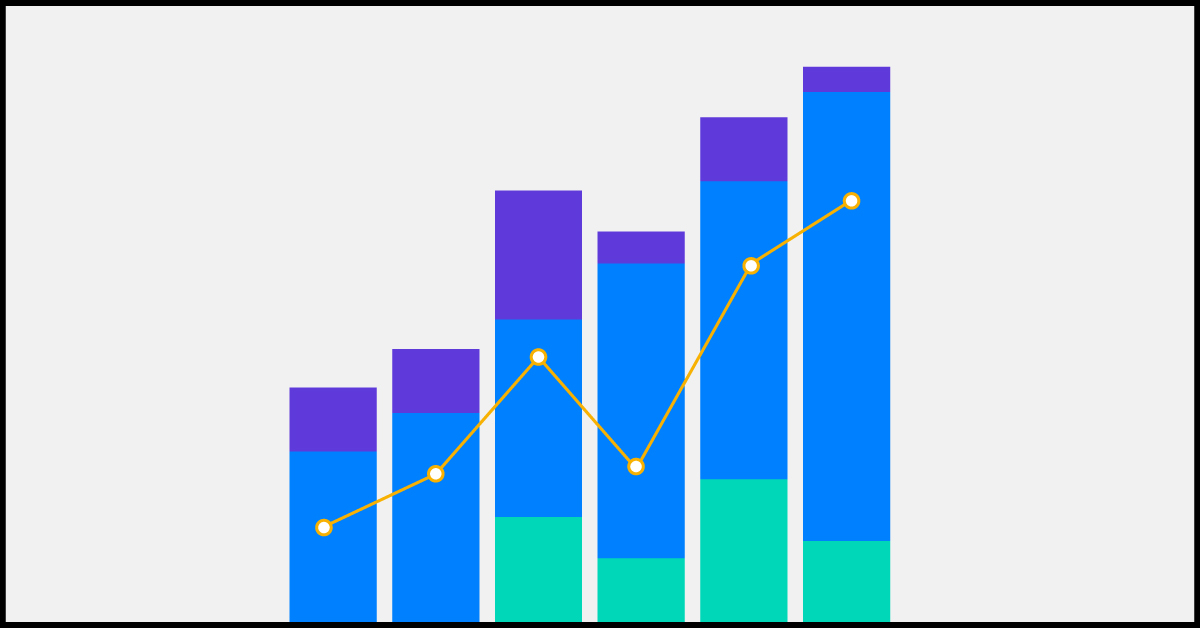How Net Dollar Retention (NDR) Aligns Customer Loyalty with Financial Performance
For today’s market leaders, sustainable growth is anchored in a simple truth: Customer loyalty drives revenue stability. The rising cost of customer acquisition means that existing customers play even a more critical role in hitting revenue goals.
One of the most critical revenue metrics is Net Dollar Retention (NDR), a KPI that revenue teams and investors use to measure both resilience and growth potential. NDR moves beyond annual recurring revenue (ARR) to account for upsell, expansion, and churn — reflecting your company’s health, market viability, and ability to deepen customer value.
In the SaaS market, NDR is more than a revenue number; it’s a measure of strategic alignment and operational excellence.
The Strategic Value of NDR for Investors and Market Leadership
Whether scaling for IPO or expanding as an established market leader, NDR is indispensable. A high NDR percentage signals strong retention, cross-functional engagement, and incremental value creation, key factors for driving sustained revenue.
An NDR over 120%, for instance, positions an enterprise as a high-value investment, delivering consistent ARR growth without aggressive customer acquisition. Adding in consistent new logo acquisition and 120% NDR year over year is an investor’s dream company.
Net Dollar Retention (NDR) = (Beginning ARR - Churn + Expansion) / (Beginning ARR)
McKinsey’s Harald Fanderl explains: “Creating a harmonized, seamless customer journey for existing customers can cost significantly less than acquiring new customers. Customers who are more satisfied typically have fewer questions and therefore cost less to maintain, and the likelihood of retaining satisfied customers is 20% to 30% higher than if customers are less satisfied. Our research shows that over time, leaders who focus on customer experience achieve not only higher shareholder returns but also up to two times higher revenue growth than those whose customers are not as happy.”
In other words, great customer engagement – from implementation through renewal – has the power to unlock recurring revenue and customer loyalty.
Net Dollar Retention Definition
Net dollar retention is a key metric for companies hoping to achieve hypergrowth, succeed in private equity partnerships, and launch initial public offerings (IPOs). At the time of their IPOs, for example, the companies Alteryx and Okta had NDRs of 134% and 123%, respectively.
Who Drives NDR? Aligning Cross-Functional Teams for Predictable Revenue
Achieving high NDR requires a coordinated, cross-functional focus on customer experience. Today’s revenue leaders unify teams across customer success, product, and sales — each playing a unique role in maintaining and increasing NDR.
- Renewal (Sales + CSM + Support): A seamless renewal process prioritizes customer engagement. Customer Success leads, with strategic support from Sales and technical input from Support to address any expansion or upsell needs.
- Cross-sell and Upsell (Sales + CSM): The most effective CSMs anticipate growth opportunities by analyzing customer goals, surfacing high-impact solutions, and engaging key stakeholders to deliver tailored value.
- Churn Prevention (CSM + Product + Support): Addressable churn is preventable when customer-facing teams are proactive. For optimal NDR, teams need real-time visibility into customer health metrics, product engagement, and account activity.
Joe Vitalone, Strategic Advisor at Extreme Networks, explained in a recent webinar: “Customer churn, now, becomes really important. Interdepartmentally, [ensure your teams are talking together] across Customer Success, Marketing, Sales, so that you understand if you’ve got a happy customer. You may be forecasting something, but your customer may not be happy - and you may not know it."
Why is NDR a Different Sales Metric from Churn, Renewal, Cross-Sell, and Upsell?
If 120% NDR is the target, there are a host of sub-metrics that can be a guide in how to increase your NDR. The two big levers that any company has to increase NDR is to reduce churn and sell more. But remember, both of these are cross-functional objectives! Today’s winning CROs unite all revenue-critical teams to drive toward 120% NDR.
Here’s how key customer metrics are defined and the cross-functional teams that need to work together to achieve the best outcome:
- Renewal (Sales + CSM + Support): A strong renewal motion is critical to keeping existing customers. We find the most success when Customer Success teams take the lead, and bring in their partners in Sales and Support, if the renewal includes upsell and therefore requires implementation work.
- Cross-sell (Sales + CSM): CSMs and Sales partner together to drive a comprehensive cross-sell. The best CSMs are always looking for where their available services could provide more value to their customers. Providing the summary of the pains, the key stakeholders, and the customer objectives that additional solutions could solve for the customer are critical to driving an effective cross-sell.
- Upsell (Sales + CSM): An upsell is a type of expansion that occurs when a current customer purchases upgrades, add-ons, or a bigger, more expensive version of their existing product. Similar to the cross-sell the more the CSM is in lockstep with the customers growth needs, the faster and more effective the upsell.
- Churn (CSM + Support + Product) : Setting up your CSM team with proactive customer retention software - but not similarly equipping your Support or Product teams for success or cross-team collaboration - will contribute to customer loss. Churn may happen when the customer is disconnected from the value of a company’s products or services. When a customer churns, they might go without a solution or become a customer of another vendor.
- Churn budget (CSM + Sales): Churn budget refers to the amount of dollars a SaaS company has estimated in potential losses during a given time period. Holding both sales and CSMs accountable to the churn target can keep both teams in lockstep on reducing churn at all cost
- Addressable churn (CSM + Product + Support) : This type of customer loss can occur due to gaps in support, product fit, and adoption. Generally, this type of churn is seen as preventable, or addressable, because a company can take action to course correct and keep this customer. This is the churn that you want your CSM, product, and support teams rallying together to fix all challenges that may lead to churn.
NDR, on the other hand, is a holistic metric that captures all of these revenue insights, giving you a sense of how well your business performs overall. Only by examining NDR can you understand how well you keep, engage, and grow your customers. NDR offers a big-picture view of your overall customer journey and underscores the success of your go-to-market motion.
How Top-Performing Revenue Teams Achieve High NDR
Here are best practices we have learned after helping 1,500+ customers align on the right Revenue Cadence to drive net retention.
- Integrate Customer Health and Revenue Metrics
Comprehensive customer health metrics — with historical and real-time data — can reveal nuanced insights. For example, a segmented health score lets you see where upsell or cross-sell opportunities exist among your most satisfied customers, while also highlighting accounts at risk. This data-driven approach drives both retention and ARR.
- Centralized Customer Data for Strategic Decision-Making
By centralizing data in a platform like Clari, revenue teams gain a holistic view of customer health across engagement, forecast, and risk metrics. Unlike traditional BI tools, Clari’s real-time dashboards empower individual contributors to update CRM insights seamlessly, enabling more effective, immediate decision-making.
- Implement a High-Impact Revenue Cadence to Drive NDR
A consistent Revenue Cadence creates structure and focus around NDR. Clari’s clients, for instance, implement a 13-week cadence, anchoring every team on actionable KPIs, such as Net Promoter Score, AI-generated deal scores, and customer usage trends.
Ready to lead your revenue team to a new level of NDR success? Download our CRO Playbook to unlock the revenue framework used by Fortune 500s to drive predictable growth.
Ready to lead your revenue team toward NDR over the thirteen-week quarter - every quarter? Download our Revenue Cadences Playbook to get started.


